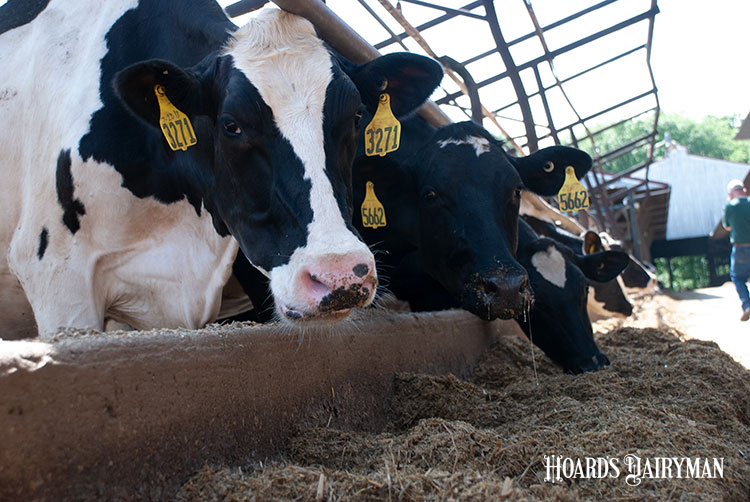
In general, the situation sounded similar in all the conversations . . . big intake and high-end cows break with some digestive upset ranging from severe issues such as hemorrhagic bowel syndrome to less severe but concerning matters such as loose and watery manure. In one notable case, an extensive mycotoxin panel was completed on the total mixed ration (TMR), but the results left much yet to be explained. There wasn’t a mycotoxin load that jumped out as severe or causative. On my end of the phone call, this wasn’t surprising as this scenario has played out time and time again over the past decade.
The situation presented on these phone conversations represents an intersection between veterinary and nutritional science. In conversation last year with Byron Williams, an accomplished veterinarian, we discussed the opportunities at hand in sharing nutritional and veterinary expertise with dairies in managing and feeding for improved health and performance. We’ll revisit this further in the future.
In my experience, there is often no single causative factor at play. There may be one item that serves as the proverbial “straw that breaks the camel’s back.” However, there are always several factors that play into a high producing herd breaking out with digestive upset.
The disease triangle turned into a diamond
The clinical situation can be thought of like the disease triangle in plant health and disease. Over the past few years, we’ve learned from Damon Smith and other plant pathologists that the disease triangle consists of environmental, host, and pathogenic factors. Each of these must be an issue for disease to break out in the field.
On the cowside, I believe the triangle is actually a diamond, and I have laid out a schematic in the figure to detail the “feed hygiene diamond”. It’s like a baseball diamond with four bases. Please keep in mind that there’s likely a catchier name for this figure, so please send me your suggestions!

In dairy nutrition and health, mycotoxins represent just one fraction of the fungal base at the top of the diamond. Wild spoilage yeast and mold can also wreak havoc on the rumen, just like spoiled food can do some damage on your digestive tract. The nutritional and bacterial bases receive far less attention than the fungal and mycotoxin area but can contribute equally, in my opinion. The nutritional base and components I tend to focus on include:
- Consistent feed delivery and push-ups
- Accurate feed delivery . . . delivering the ration as formulated by the nutritionist
- Feed stability in the feed bunk
- Rumen starch digestibility, or lack thereof
The starch connection
This last point is likely a contributing factor with the digestive upset cases discussed over the past couple of weeks. The 2021 corn crop has been in the silo and bin for quite some time, but I’ve continuously written the past eight months about less than stellar starch digestibility for grain and silage. We have focused numerous prior articles on wasted feed costs and diet energy. However, now it’s time to turn our attention to hindgut starch digestion with rumen bypass starch.
In light of lesser than ideal digestible starch, many dairies have fed more grain to achieve similar rumen digestible starch levels to years past and maintain performance. This makes some sense. However, it also pushes greater rumen bypass starch loads, which can be of concern when we have fungal, bacterial, or other environmental stressors at play.
As a case in point, Anne Marie Elwing and I caught up at the Four-State Dairy Nutrition Conference and discussed how her family’s dairy herd hemorrhagic bowel cases virtually disappeared when her dairy sourced corn with a finer and more consistent particle size. In our conversation, we shared speculation that coarsely ground, and less digestible, corn was bypassing the rumen. This rumen bypass starch load was then, in turn, contributing to the hemorrhagic bowel and gastroenteritis that she diagnosed following numerous necropsies of high-end dairy cows. Please take this discussion point up with your nutritionist and veterinarian if your herd has experienced any of these symptoms as of late.
Lastly, the “stress” component deserves your management team’s attention. Environmental or other management stressors on farms will affect health, hamper immune system response, and can render your herd more likely to break with digestive upset. Temperature swings, from mild to hot temperatures, affect dairy cows far more than we understand.
Bear these other stressors in mind as contributing factors to the feed hygiene diamond. Ultimately, think of this like a baseball or softball diamond, and we need to cover all the bases in defense of your herd’s health.








